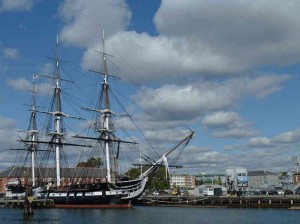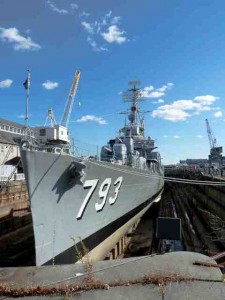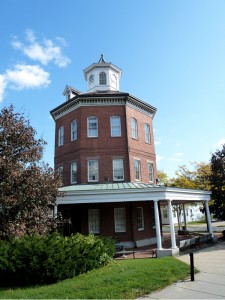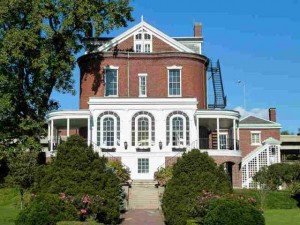Select your language to auto-translate:
US Naval Facility Since 1800
The Charlestown Navy Yard is home to the USS Constitution, the USS Cassin Young, one of the first two dry docks in the US, and the USS Constitution Museum.
Great fun. Plan for a several hour visit.
The Museum is free, donation requested
Open 9-5 daily. Closed Christmas, New Year’s Day and Thanksgiving
National Park Service website:
http://www.nps.gov/bost/historyculture/cny.htm
National Park Service Maritime History website:
http://www.nps.gov/nr/travel/maritime/bns.htm
USS Constitution Museum website:
http://www.ussconstitutionmuseum.org/
Museum phone: (617) 426-1812
Public transportation: Green or Orange line to North Station (in Boston proper). Alternative, 93 Bus to Sullivan Station Bunker Hill.
Plan at least an hour for a cursory view of the Navy Yard. If visiting the Navy Yard along with Constitution, plan 2+ hours.
If coming from downtown, the Water Shuttle from Long Wharf is an excellent and fun way to travel and see the harbor at the same time.
Background Information
In 1800, the government purchased the land for the Charlestown Navy Yard at Moulton’s Point, and established the yard itself shortly thereafter. (Moulton’s Point is where the British troops landed for their attack on the Patriots during the Battle of Bunker Hill.) In 1814, the yard launched the first US ship of the line, the USS Independence.
Multiple Navy Yard ships saw service in the Civil War – however, it was primarily a repair and storage facility until the 1890s. At that time, it started to build steel-hulled ships.
The Navy Yard reached its height of activity during World War II, with peak employment in 1943 of 50,128 men and women – working around the clock, 7 days a week. The yard then covered 130 acres with 86 buildings and 3.5 million square feet of floor space. A second dry dock was also added.
During this peak period, the Navy Yard could build a Destroyer Escort in four months and an LST (Landing Ship Tank) in less than four weeks. Overall, between 1939 and 1945, the Navy Yard built 30 destroyers, 60 escort vessels, overhauled and repaired 3,500 ships, and outfitted over 11,000.
After World War II, the Navy Yard was involved with upgrading the fleet and modifying World War II ships for Cold War service. Being so far from the fighting, the Navy Yard did not receive much work during the Korean and Vietnam conflicts.
As part of cost cutting measures, President Nixon ordered the yard closed in 1974. Many Bostonians believe the Nixon administration made that decision to punish Massachusetts, the only state to vote against him in 1972.
Since the closing, the bulk of the facility has been recycled and developed. The thirty acres that were transferred to the National Park Service became part of the Boston National Historical Park, with a mission “to interpret the art and history of naval shipbuilding.”
Dry Dock 1
Dry Dock 1 was one of the first two dry docks put into service the United States, missing out on the honor of being first by only a week – that distinction when to Norfolk, Virginia. Dry docks are important to avoid the tedious, expensive and dangerous process of careening or “heaving down” a ship to work on its hull. Careening requires leaning a ship over on its side, which puts great stress on its hull and only exposes one side at a time. In fact, sometimes ships would sink during the careening process.2
The need for dry docks was understood from the beginning of the US Navy, but construction did not begin until 1827 and then took six years to complete. The project was designed and under the control of Loammi Baldwin, considered the father of civil engineering in the United States.
The granite for this project, as well as the dry dock in Norfolk, came from Quincy – the same site that provided the granite used for the Bunker Hill Monument. Dry Dock 1 opened in June of 1833 and its first customer was the USS Constitution.
There are excellent interpretive displays that show how the dry dock works and illustrates the alternative careening method.
USS Cassin Young
The USS Cassin Young is a World War II Fletcher-Class Destroyer commissioned on the last day of 1943. She served with distinction in the Pacific, including during the Battle of Leyte Gulf. She received damage during two separate kamikaze attacks during 1945, one of which killed twenty-two and wounded forty-five sailors.
Visitors can tour the ship, with or without guides. ID is required.
The photograph in the Dry Dock 1 section above shows the USS Cassin Young.
Muster House
The interesting eight-sided Muster House was built in 1852 and was an administrative building for the Navy Yard. The clock and bell were used to assemble civilian employees for work at a time when most workers did not wear watches.
Rope Walk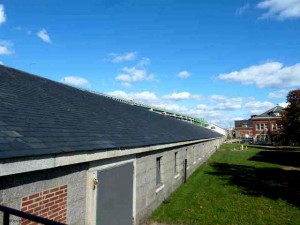
Rope has always been is an essential element of ships, so having quality and production control was a key aspect of the US Navy’s strategic plan. The USS Constitution, for example, requires over four miles of rope.
The Ropewalk at the Navy Yard produced most of the cordage used by US Navy between 1838 and 1955 – in 1942 alone producing over 4 million pounds! It had a ¼ mile of rope-laying area, allowing it to produce rope of up to 1200 feet in length as rope is twisted in a straight line. Its innovative steam-powered machinery could produce rope of much higher strength than manual techniques. The Ropewalk was used until 1971.
Although the building is still standing, it is boarded up and there is not much to see. There are interpretive displays in the National Park Service Visitor Center that you walk through prior to boarding the USS Constitution. These explain the rope making process and illustrate the rope walk in operation.
Commandant’s House
The Commandant’s House was built in 1805 and was home to the Navy Yard’s commanders and their families for many years. It has hosted five U.S. presidents and many dignitaries and foreign heads of state.
There are no visitors allowed inside.
